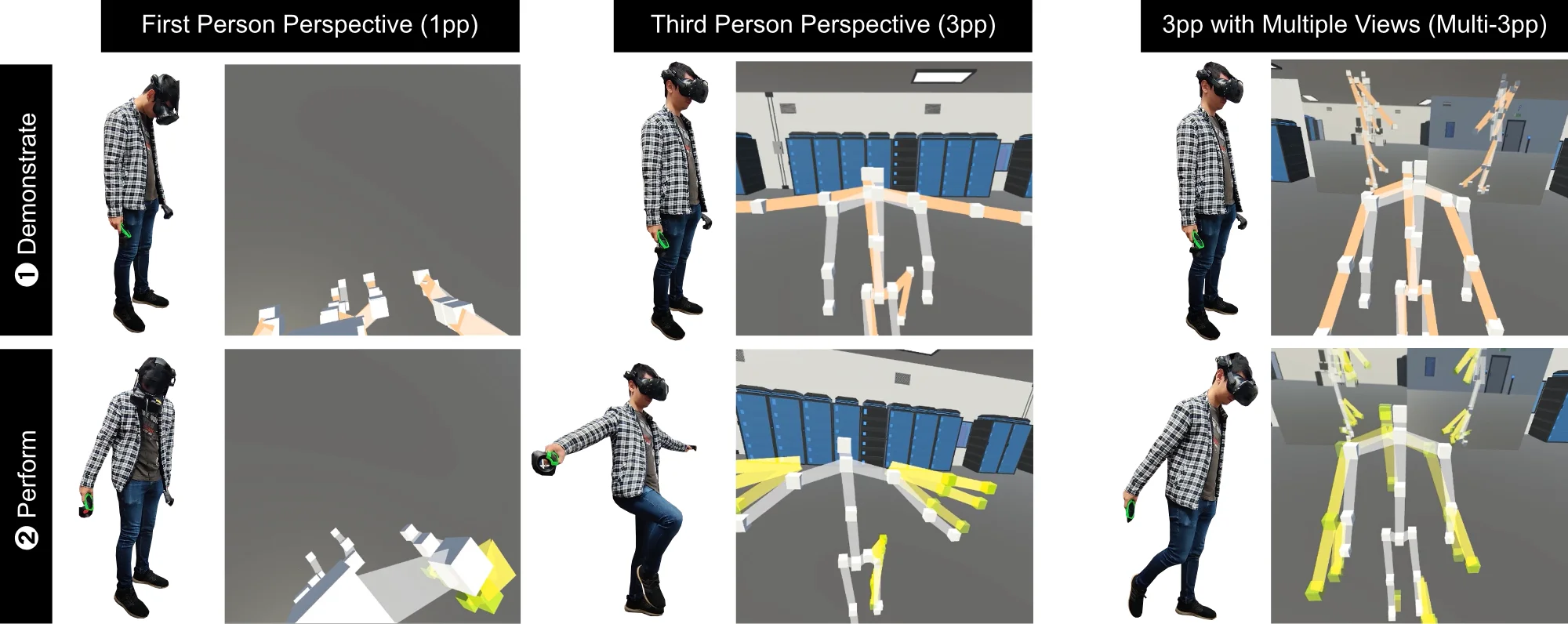Understanding Perspectives for Single- and Multi-Limb Movement Guidance in Virtual 3D Environments

Movement guidance in virtual reality has many applications ranging from physical therapy, assistive systems to sport learning. These movements range from simple single-limb to complex multi-limb movements. While VR supports many perspectives – e.g., first person and third person – it remains unclear how accurate these perspectives communicate different movements. In a user study (N=18), we investigated the influence of perspective, feedback, and movement properties on the accuracy of movement guidance. Participants had on average an angle error of 6.2° for single arm movements, 7.4° for synchronous two arm movements, and 10.3° for synchronous two arm and leg movements. Furthermore, the results show that the two variants of third-person perspectives outperform a first-person perspective for movement guidance (19.9% and 24.3% reduction in angle errors). Qualitative feedback confirms the quantitative data and shows users have a clear preference for third-person perspectives. Through our findings we provide guidance for designers and developers of future VR movement guidance systems.
Publication
Hesham Elsayed,
Kenneth Kartono,
Dominik Schön,
Martin Schmitz,
Max Mühlhäuser,
and
Martin Weigel
Understanding Perspectives for Single- and Multi-Limb Movement Guidance in Virtual 3D Environments
In Proceedings of ACM VRST ’22.
Project Page
PDF
BibTeX
DOI
Full Paper
